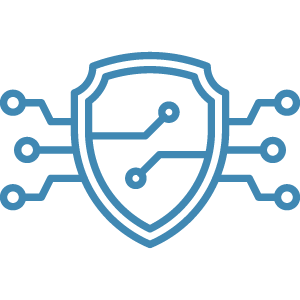IT Resources
IT Resources
Helpful IT Insights, Tips and Updates
Welcome to our IT resources page! This is your go-to place for tips and advice on everything IT. Our IT blog has helpful articles to keep your systems secure, your data safe, and your IT running as it should.
Stay in the Know
Make sure to check back for new posts, and if you ever need help, don’t hesitate to reach out to us.
Our Latest Blog Posts
We regularly update our blog with helpful posts on IT best practices, trends and tips. Here are our most recent articles
Switching MSPs Doesn’t Have to Hurt: A Simple Guide
Switching MSPs doesn’t have to be a high-wire act. For most SMBs, it’s way closer to changing a service plan than rebuilding the plane mid-flight. I know that sounds a little too neat, because if you’re like most leaders I talk to, the idea of switching your IT...
How Compliance Maturity Reduces Cyber Insurance Premiums, Protects Coverage, and Improves Claim Outcomes
Cyber risk has become a defining business issue, and insurance carriers are responding with unprecedented scrutiny. Organizations are no longer judged by written policies or audit promises—they are judged by the strength, visibility, and provability of their security...
Managed Detection & Response (MDR & XDR): Why Companies Can’t Afford to Wait
It happens every 39 seconds: a cyberattack somewhere in the online world. But the average breach remains undetected for 207 days. Almost seven months of attackers laterally moving, stealing data, and gaining persistence within your environment. For companies managing...
Endpoint Protection: Not Just Antivirus—What Do Organizations Need?
A simple email. A curious click. It all begins the same. And suddenly, an organization’s data worth millions is being held hostage by ransomware. In the present age, antivirus is no longer sufficient. Legacy antivirus software was designed to detect known threats. But...
The True Cost of Data Breaches & How Penetration Testing Reduces Risk
Data breaches are no longer rare events. They’re an everyday business risk. IBM's Cost of a Data Breach Report 2025 reports that today's average breach actually costs companies $4.5 million, aside from long-term consequences like loss of brand value and customer...
Why Private Equity Firms Are Making Cyber Insurance Part of Their Acquisition and Holding Strategies
Private equity (PE) firms thrive on building value — acquiring companies, scaling them, and exiting at a profit. But in today’s digital-first economy, cyber risk has emerged as a potential threat to exit valuation. A ransomware attack, a compliance violation, or a...
Staying Ahead of Healthcare Compliance Changes: What You Need to Know Now
Healthcare compliance has always been complex, but today’s environment is evolving faster than ever. From new HIPAA enforcement priorities to interoperability rules and cybersecurity mandates, organizations face mounting pressure to keep up. Failing to adapt can lead...
Did You Know: Patient records are worth 10x more than credit card data to hackers
As a doctor or dentist, your first priority will always be your patients. Every day you and your team work hard to deliver great care, earn trust, and keep people healthy. But behind the scenes, there’s another challenge you can’t ignore: cybersecurity. Medical and...
Time for a New Approach: IT Support with a Human Touch
Let’s face it—most business owners and employees don’t get excited about IT and cybersecurity. When systems break, when emails stop working, or when a suspicious message lands in the inbox, the last thing you want is a long wait for help or a reply filled with...
Don’t Become a Statistic: Cyber Attacks in Medical and Dental Practices on the Rise
Running a medical or dental practice means one thing is always at the top of your mind: your patients. Every day, you and your team focus on providing excellent care, building trust, and making sure your patients feel comfortable and supported. That’s where your...
Managed Cloud Hosting for Growing Businesses
Smartest Move for Growing Businesses For growing businesses, staying competitive means having the right technology in place—without the overhead. Managed cloud hosting is one of the smartest moves a scaling company can make. It delivers the flexibility, performance,...
The Benefits of Outsourcing IT: Getting the Most from Your IT
In today’s competitive society, businesses need to rely on a robust IT infrastructure to stay ahead of the competition. You can achieve your IT goals by partnering with the right people and utilizing efficient technology. When you have a business to manage, the last...
Our Latest Videos
Watch our videos to learn how our security services impact our customers’ businesses on a daily basis.
Our Latest eGuides
Learn how GainSide can help you by downloading one of our complimentary eGuides.
Subscribe!

Tired of dealing with IT problems that slow you down?
Our free guide reveals how managed services can help you stop issues before they start and save money. Download now to see how managed IT can take your business to the next level.
Check Out Our IT Services
Take a look at what we offer and see how we can help your business

Managed IT Services
Get 24/7 IT support and management to keep things running smoothly.

IT Security Services
Keep your business protected from cyber threats with endpoint protection, email security and more.
Data Management & Backup Solutions
Keep your data safe with cloud backup, hosting and recovery options.
















